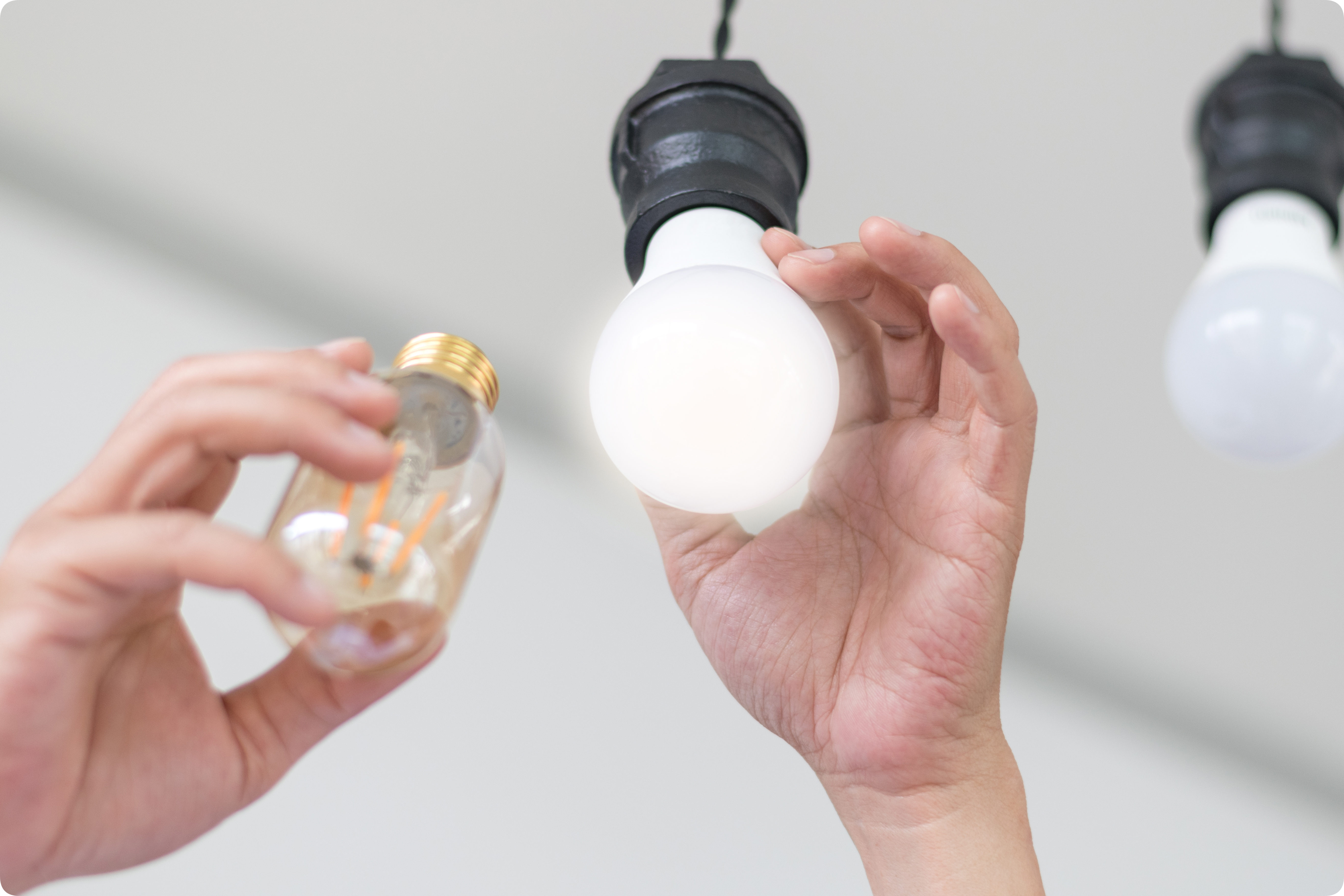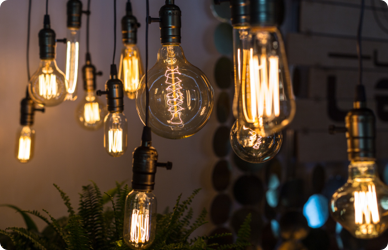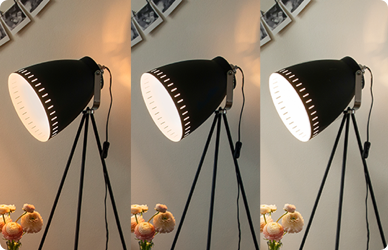

Save energy with LEDs
Normally you would only replace a bulb when it has reached the end of its life. However, replacing halogen or other lightbulbs with an LED bulb before they reach that stage is usually worth it. It can help you save a lot of energy consumption, which in turn helps you save on energy costs. It's also one of the simplest ways to save energy in your home Want to find out more? Keep reading to find out how much you can save when you switch to LEDs!


Replace halogen bulbs with LED
So what do you actually get out of replacing a halogen bulb with an LED bulb? Halogen bulbs are no longer legally sold in the European Union as of 1 September 2018 as they do not meet EU standards on sustainability. LED bulbs consume 80% to 90% less power than halogen or incandescent bulbs. They also have an average lifespan of 15,000 hours, meaning they can last up to 15 years!


Brightness
The brightness of your bulb can have a major effect on what your interior feels like. For LED bulbs, brightness is not measured in watts but in lumen. Want to know which rooms need what level of brightness?


Kelvin
The colour temperature of a light, measured in Kelvin, indicates the warmth of the light produced by a bulb. LEDs are often thought to produce very bright light, but with the right amount of Kelvin, a bulb isn't always so bright! The right warm mood lighting also makes your interior feel warmer!
How much can I save with LED lighting?
To help you understand how much you can save, we will take a look at how much can be saved when you switch all the lights in your living room to LED bulbs. The calculation is based on the following lights/light fixtures in a living room (with the energy label indicated in brackets):
- 1x ceiling light (A)
- 2x wall lights (E)
- 1 x table lamp (C)
- 1x uplighter (D)
- Lighting in a (TV) cabinet (F) (using LED strips, which is usually energy efficient and only possible with compact LED technology)
| Halogen bulbs | LED | |
| Power consumption per day | 2,7 kWh | 0,42 kWh |
| Power consumption per year | 985,5 kWh | 152,3 kWh |
| Costs per year* | €571,59 |
€88,91 |
*Calculated based on the average kWh price of €0.58 (as of August 2022 in the Netherlands) and an average use length of 6 hours per day.
Watts vs. lumens
The brightness of a light used to be express in watts. Nowadays this doesn't tell you much about the brightness of a bulb, so you also need to look at the bulb's lumen rating (indicated on its packaging). This can be a little tricky when you switch from halogen or incandescent bulbs to LED lighting, so here is a comparison chart for reference:
| Wattage | Light output |
| 15 watts | 100 to 150 lumens |
| 25 watts | 200 to 300 lumens |
| 40 watts | 400 to 500 lumens |
| 60 watts | 700 to 800 lumens |
| 75 watts | 900 to 1000 lumens |
| 100 watts | more than 1300 lumens |
For ambient lighting you should use bulbs with up to 200 lumens. Bulbs with 300 to 500 lumens are often used in living areas. Bulbs with an output of over 500 lumens is usually considered very bright light. This is often used in garages, cellars and bathrooms/toilets.


Advantages of using LEDs
Still not fully convinced? Here's a handy list of all the advantages of using LEDs:
- LEDs use less power, which will significantly reduce your energy costs
- LED bulbs have a longer lifespan (over 15 times longer halogen bulbs)
- LEDs don't heat up, which makes them less of a fire hazard
- Available in a variety of different colours and brightnesses
- LEDs are dimmable, which can help add atmosphere to your room
- LED lights are suitable for all types of light fitting
- LEDs can be used as a smart light! This means you can control them via an app or a remote control










